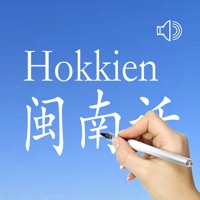
Last Updated by JUN JIANG on 2025-02-28
1. European traders such as the Dutch took the Hokkien pronunciation of tea then spread it across the globe, which gives rise to English "tea".
2. Click on the "alphabet" button in the menu bar, you can get the sound elements of the Hokkien language.
3. You can select the word in alphabetical order (English meanings) by clicking “words” in the menu bar.
4. It sounds quite different form the common Chinese word of tea 茶(cha).
5. For example, di’ has a nasal sound at the vowel i.
6. And ’gua has a nasal sound at the consonant /g/ .
7. There are over 50 million people who speak Hokkien worldwide.
8. The apostrophe character indicates there is a nose pronunciation.
9. It played an important role in the South China Sea region.
10. For instance, Tea in Hokkien is Dei.
11. It is a southeastern dialect of Chinese.
12. Liked Learn Hokkien Language !? here are 5 Education apps like Simply Learn Hokkien-Taiwanese; Learn French - AccelaStudy®; Learn German - AccelaStudy®; Learn Italian - AccelaStudy®; Learn Spanish - AccelaStudy®;
Or follow the guide below to use on PC:
Select Windows version:
Install Learn Hokkien Language ! app on your Windows in 4 steps below:
Download a Compatible APK for PC
| Download | Developer | Rating | Current version |
|---|---|---|---|
| Get APK for PC → | JUN JIANG | 3.00 | 1.4 |
Get Learn Hokkien Language ! on Apple macOS
| Download | Developer | Reviews | Rating |
|---|---|---|---|
| Get $1.99 on Mac | JUN JIANG | 2 | 3.00 |
Download on Android: Download Android